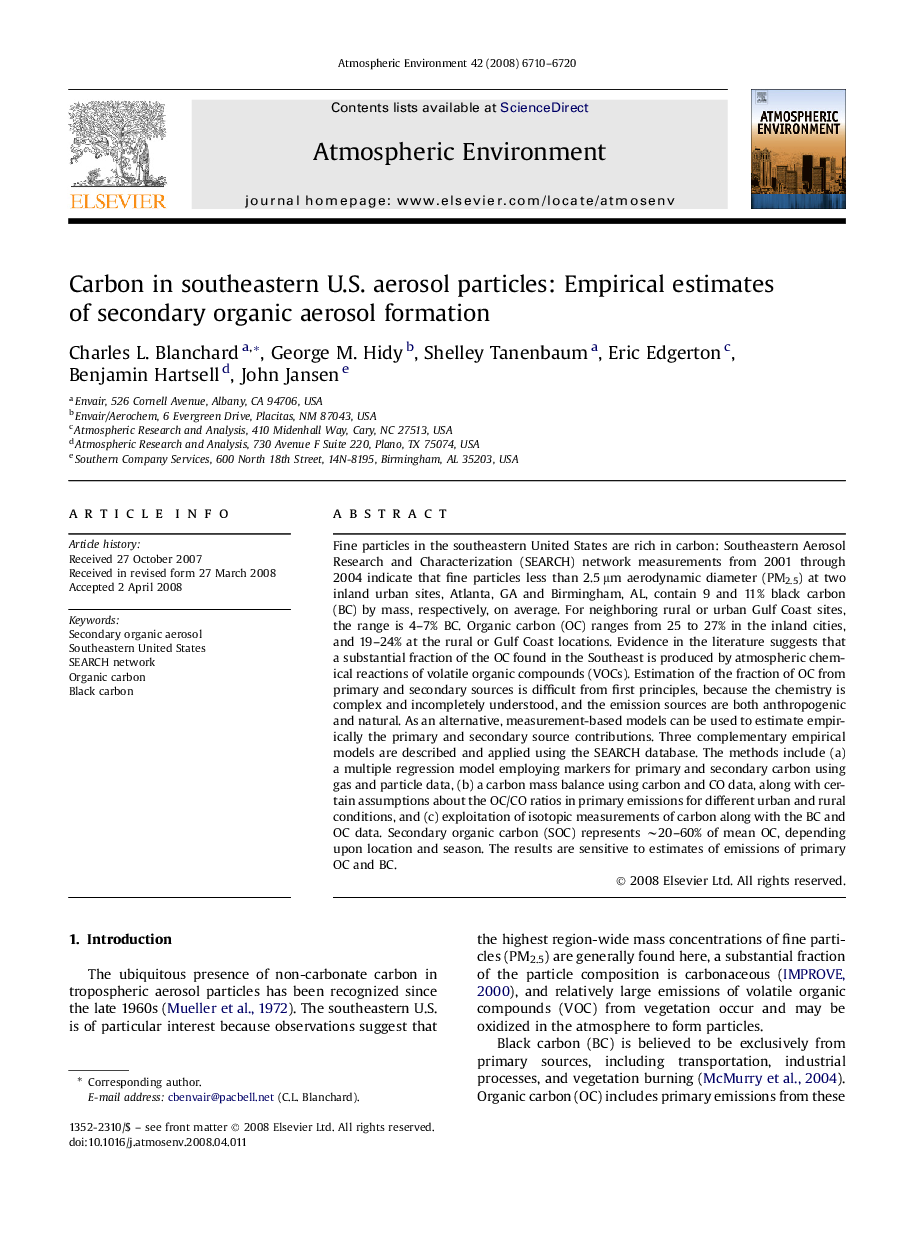| Article ID | Journal | Published Year | Pages | File Type |
|---|---|---|---|---|
| 4442606 | Atmospheric Environment | 2008 | 11 Pages |
Fine particles in the southeastern United States are rich in carbon: Southeastern Aerosol Research and Characterization (SEARCH) network measurements from 2001 through 2004 indicate that fine particles less than 2.5 μm aerodynamic diameter (PM2.5) at two inland urban sites, Atlanta, GA and Birmingham, AL, contain 9 and 11% black carbon (BC) by mass, respectively, on average. For neighboring rural or urban Gulf Coast sites, the range is 4–7% BC. Organic carbon (OC) ranges from 25 to 27% in the inland cities, and 19–24% at the rural or Gulf Coast locations. Evidence in the literature suggests that a substantial fraction of the OC found in the Southeast is produced by atmospheric chemical reactions of volatile organic compounds (VOCs). Estimation of the fraction of OC from primary and secondary sources is difficult from first principles, because the chemistry is complex and incompletely understood, and the emission sources are both anthropogenic and natural. As an alternative, measurement-based models can be used to estimate empirically the primary and secondary source contributions. Three complementary empirical models are described and applied using the SEARCH database. The methods include (a) a multiple regression model employing markers for primary and secondary carbon using gas and particle data, (b) a carbon mass balance using carbon and CO data, along with certain assumptions about the OC/CO ratios in primary emissions for different urban and rural conditions, and (c) exploitation of isotopic measurements of carbon along with the BC and OC data. Secondary organic carbon (SOC) represents ∼20–60% of mean OC, depending upon location and season. The results are sensitive to estimates of emissions of primary OC and BC.
